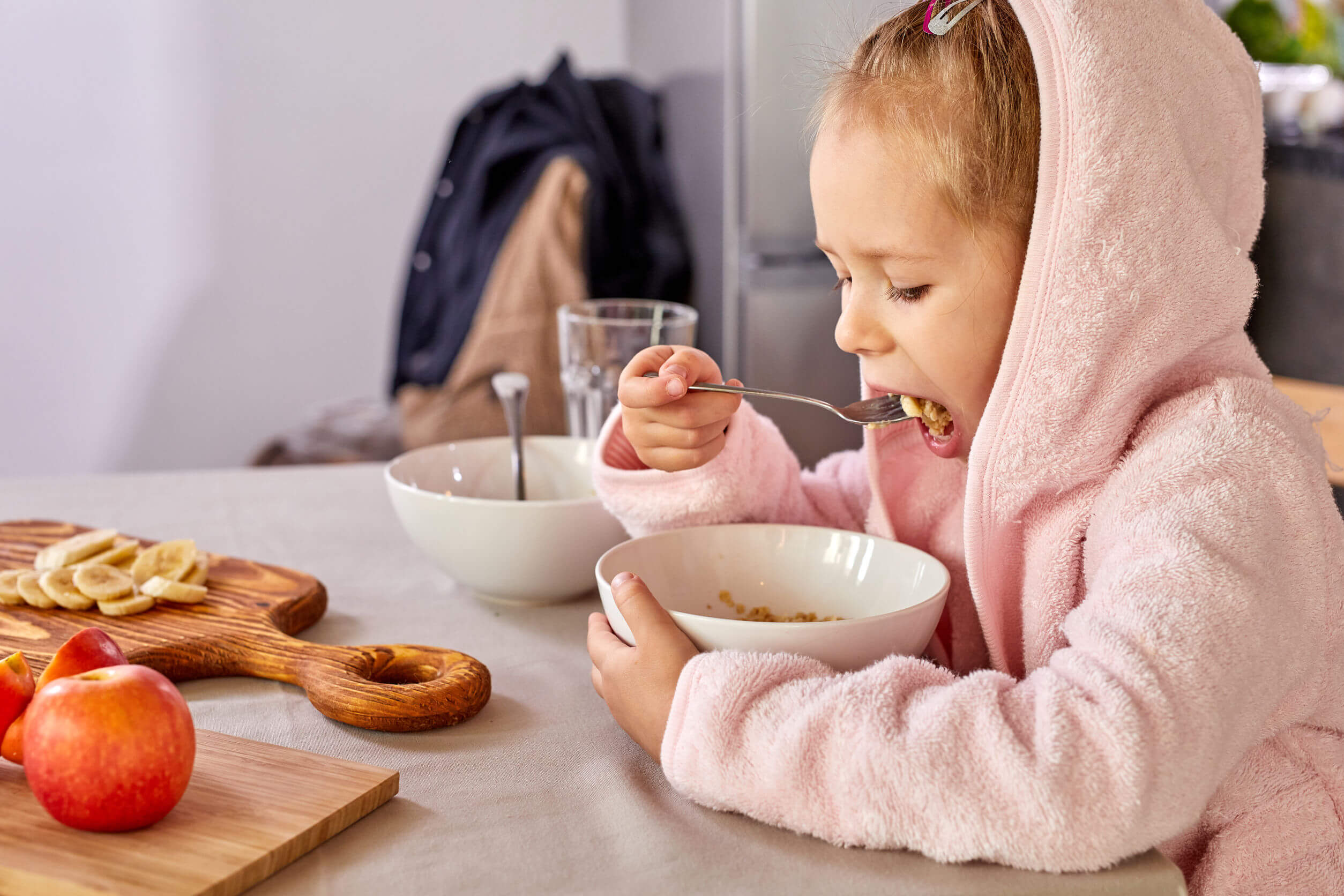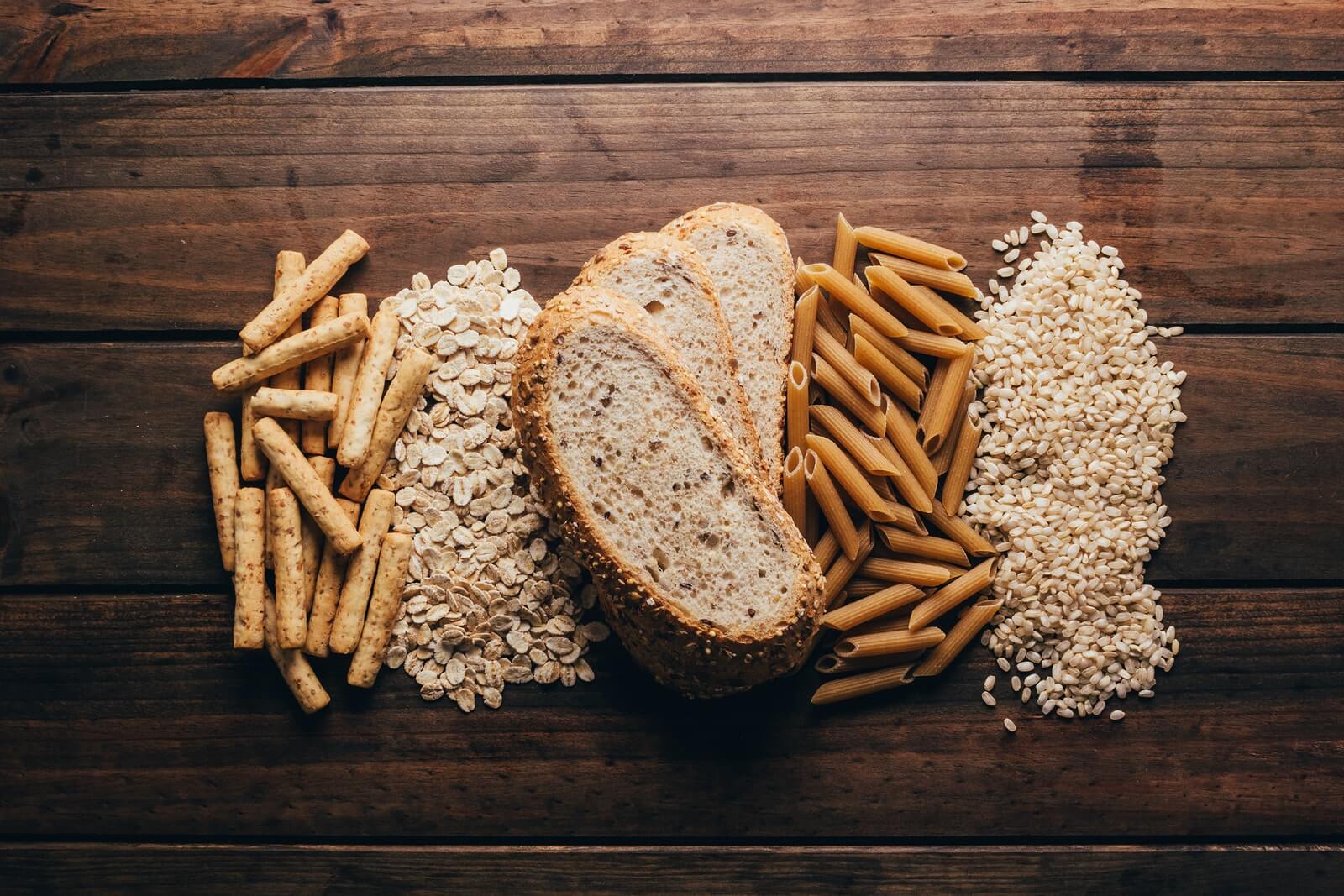7 Foods to Combat Constipation in Children

Constipation in children can occur frequently. This condition can cause great discomfort and negatively impact the habits of little ones. Fortunately, it’s possible to combat constipation in children by implementing an effective dietary treatment.
However, it should be noted that constipation in children can be the result of very different causes. Sometimes the trigger is an eating problem, but physical inactivity can also have a significant effect. Identifying the cause is key to choosing an effective remedy.
What is constipation and how is it treated?
Toileting problems in children are characterized by infrequent bowel movements or hard, dry stools. This can be different according to each child, and some of its manifestations are the following:
- Less than 3 stools a week
- Hard or dry stools that are difficult to pass
- Stomach pain and/or when evacuating the intestines
- Traces of liquid or pasty stool in the underwear (which can be a sign of stuck stool)
- Blood on the surface of the stool
In general, it usually appears after some changes in diet, physical activity, or habits concerning going to the bathroom. But it can also be due to other reasons such as allergies and intolerances, taking medications, and even some diseases. For this reason, we always recommend consulting a doctor in order to establish a diagnosis and find the best treatment (if necessary).
In many children, it’s not usually a serious situation, although it produces a lot of pain and discomfort. Most of the time, it can be addressed with a few simple changes that can be applied at home. So try these foods for constipation in children, as they can be a great help.
Foods to combat constipation in children
The following foods that we’re going to show you have proven to be useful in order to combat constipation in children, managing to increase the frequency and ease of bowel movements.
1. Oatmeal for the little ones

Within the group of cereals, the highest quality representative is oats. This food has a significant amount of soluble fiber inside, which is capable of fermenting at the intestinal level, thus improving the health of the microbiota.
According to a study published in Nature Reviews, it’s important to increase the presence of fiber in children’s diets. This way, a fecal bolus of greater volume is generated, which is why a more efficient intestinal transit is achieved. The stimulation of the mechanoreceptors of the tube makes the difference.
2. Kiwis
Kiwis are the fruit that has the greatest effects on the management of constipation, along with apples. They’re also good representatives of foods with a high fiber content, which, in this case, is soluble. Not only are they an energetic substrate for the microbiota but they also guarantee a more powerful intestinal peristalsis.
Thanks to this last property, the waste descends quickly through the digestive tract. If a good intake of water is ensured, the result will be even better.
3. Yogurts are essential foods in children’s diets
One of the keys to managing constipation in children is the consumption of probiotic bacteria. These are found mainly in fermented dairy products, such as yogurt and kefir.
The use of probiotic supplements has been investigated in recent years as a way to treat constipation problems. But at the moment, the results aren’t conclusive and change depending on the type of probiotic studied.
On the contrary, the authors of this same study found positive results after the administration of yogurt, both natural and enriched with probiotics. Specifically, they experienced better stool frequency and less pain when passing stool.
4. Whole grains
When choosing products with a high carbohydrate content, it’s good to opt for tubers, legumes, or whole grains. The latter stand out for the presence of fiber in their composition, unlike their refined counterparts.
In addition, the low glycemic index carbohydrates they have are slowly absorbed in the intestine. Therefore, efficient management of blood glucose is achieved, avoiding spikes in blood glucose that condition the health of the pancreas.
They’re useful foods to prevent constipation. The insoluble fiber inside helps increase the frequency of bowel movements, as well as their consistency.

5. Prunes
This type of dried fruit also contains a lot of fiber and is a perfect supplement to the diet of constipated children. The best option is to soak two or three plums for a few hours and, after this time, eat the plums and the remaining liquid.
However, if children find it difficult to take them in this way, you can also offer prune juice, which can be accompanied (or not) with apple juice.
6. Olive oil
This food shouldn’t be taken as a home remedy, nor is it necessary for children to take a tablespoon of oil on an empty stomach. But it is an essential ingredient when cooking, seasoning meals, and accompanying the main ingredients.
Fats in the diet help lubricate the intestine, thus promoting intestinal transit. They’re also foods that stimulate the gallbladder to secrete bile, which improves digestion and exerts a mild laxative effect.
7. Water
Hydration is another key point to facilitating regular intestinal transit. It’s necessary to drink enough to prevent the problem from appearing. In addition to increasing fiber intake as a treatment method, it’s essential to adjust water intake (especially if the child was deficient).
Water is, in general, the best drink to offer children. But broths and fruit juices (from time to time) can also contribute to their hydration.
Physical activity is key to avoiding constipation in children
Not only is it important to improve dietary habits, but it’s also key to ensuring that the little ones engage in physical exercise on a regular basis. This way, functional constipation, characterized by an inefficient transit of the fecal bolus through the intestine, is avoided.
The more physically active children are, the less likely they are to experience these types of problems. Especially when it comes to food.
There are also other very positive practices in regard to the habit of going to the bathroom. In this sense, it’s positive for children not to hold back the desire to go to the bathroom, to have enough time to do so, and to create specific routines for this moment.
To combat constipation in children, include foods in the diet
With the foods that we’ve just mentioned, you’ll ensure that the intestinal transit of children is adequate. If they’re included in a varied and balanced diet, the risk of developing chronic constipation will be reduced. However, a child’s diet isn’t the only important factor, so it’s also necessary to modify other certain habits in little ones.
Now, remember that if the problem doesn’t improve, you need to consult a doctor. This is necessary if your child stops eating, loses weight, has a fever, has blood in their stool, has a swollen abdomen, or experiences persistent pain when passing stool.
Constipation in children can occur frequently. This condition can cause great discomfort and negatively impact the habits of little ones. Fortunately, it’s possible to combat constipation in children by implementing an effective dietary treatment.
However, it should be noted that constipation in children can be the result of very different causes. Sometimes the trigger is an eating problem, but physical inactivity can also have a significant effect. Identifying the cause is key to choosing an effective remedy.
What is constipation and how is it treated?
Toileting problems in children are characterized by infrequent bowel movements or hard, dry stools. This can be different according to each child, and some of its manifestations are the following:
- Less than 3 stools a week
- Hard or dry stools that are difficult to pass
- Stomach pain and/or when evacuating the intestines
- Traces of liquid or pasty stool in the underwear (which can be a sign of stuck stool)
- Blood on the surface of the stool
In general, it usually appears after some changes in diet, physical activity, or habits concerning going to the bathroom. But it can also be due to other reasons such as allergies and intolerances, taking medications, and even some diseases. For this reason, we always recommend consulting a doctor in order to establish a diagnosis and find the best treatment (if necessary).
In many children, it’s not usually a serious situation, although it produces a lot of pain and discomfort. Most of the time, it can be addressed with a few simple changes that can be applied at home. So try these foods for constipation in children, as they can be a great help.
Foods to combat constipation in children
The following foods that we’re going to show you have proven to be useful in order to combat constipation in children, managing to increase the frequency and ease of bowel movements.
1. Oatmeal for the little ones

Within the group of cereals, the highest quality representative is oats. This food has a significant amount of soluble fiber inside, which is capable of fermenting at the intestinal level, thus improving the health of the microbiota.
According to a study published in Nature Reviews, it’s important to increase the presence of fiber in children’s diets. This way, a fecal bolus of greater volume is generated, which is why a more efficient intestinal transit is achieved. The stimulation of the mechanoreceptors of the tube makes the difference.
2. Kiwis
Kiwis are the fruit that has the greatest effects on the management of constipation, along with apples. They’re also good representatives of foods with a high fiber content, which, in this case, is soluble. Not only are they an energetic substrate for the microbiota but they also guarantee a more powerful intestinal peristalsis.
Thanks to this last property, the waste descends quickly through the digestive tract. If a good intake of water is ensured, the result will be even better.
3. Yogurts are essential foods in children’s diets
One of the keys to managing constipation in children is the consumption of probiotic bacteria. These are found mainly in fermented dairy products, such as yogurt and kefir.
The use of probiotic supplements has been investigated in recent years as a way to treat constipation problems. But at the moment, the results aren’t conclusive and change depending on the type of probiotic studied.
On the contrary, the authors of this same study found positive results after the administration of yogurt, both natural and enriched with probiotics. Specifically, they experienced better stool frequency and less pain when passing stool.
4. Whole grains
When choosing products with a high carbohydrate content, it’s good to opt for tubers, legumes, or whole grains. The latter stand out for the presence of fiber in their composition, unlike their refined counterparts.
In addition, the low glycemic index carbohydrates they have are slowly absorbed in the intestine. Therefore, efficient management of blood glucose is achieved, avoiding spikes in blood glucose that condition the health of the pancreas.
They’re useful foods to prevent constipation. The insoluble fiber inside helps increase the frequency of bowel movements, as well as their consistency.

5. Prunes
This type of dried fruit also contains a lot of fiber and is a perfect supplement to the diet of constipated children. The best option is to soak two or three plums for a few hours and, after this time, eat the plums and the remaining liquid.
However, if children find it difficult to take them in this way, you can also offer prune juice, which can be accompanied (or not) with apple juice.
6. Olive oil
This food shouldn’t be taken as a home remedy, nor is it necessary for children to take a tablespoon of oil on an empty stomach. But it is an essential ingredient when cooking, seasoning meals, and accompanying the main ingredients.
Fats in the diet help lubricate the intestine, thus promoting intestinal transit. They’re also foods that stimulate the gallbladder to secrete bile, which improves digestion and exerts a mild laxative effect.
7. Water
Hydration is another key point to facilitating regular intestinal transit. It’s necessary to drink enough to prevent the problem from appearing. In addition to increasing fiber intake as a treatment method, it’s essential to adjust water intake (especially if the child was deficient).
Water is, in general, the best drink to offer children. But broths and fruit juices (from time to time) can also contribute to their hydration.
Physical activity is key to avoiding constipation in children
Not only is it important to improve dietary habits, but it’s also key to ensuring that the little ones engage in physical exercise on a regular basis. This way, functional constipation, characterized by an inefficient transit of the fecal bolus through the intestine, is avoided.
The more physically active children are, the less likely they are to experience these types of problems. Especially when it comes to food.
There are also other very positive practices in regard to the habit of going to the bathroom. In this sense, it’s positive for children not to hold back the desire to go to the bathroom, to have enough time to do so, and to create specific routines for this moment.
To combat constipation in children, include foods in the diet
With the foods that we’ve just mentioned, you’ll ensure that the intestinal transit of children is adequate. If they’re included in a varied and balanced diet, the risk of developing chronic constipation will be reduced. However, a child’s diet isn’t the only important factor, so it’s also necessary to modify other certain habits in little ones.
Now, remember that if the problem doesn’t improve, you need to consult a doctor. This is necessary if your child stops eating, loses weight, has a fever, has blood in their stool, has a swollen abdomen, or experiences persistent pain when passing stool.
All cited sources were thoroughly reviewed by our team to ensure their quality, reliability, currency, and validity. The bibliography of this article was considered reliable and of academic or scientific accuracy.
- Clinica Mayo. Estreñimiento en niños.
- Guerra P, Nima L. N, et al. Pediatric functional constipation treatment with Bifidobacterium-containig yogurt: a crossover, double-blind, controlled trial. World Journal of Gastroenterology. Septiembre 2011. 17 (34): 3916-3921.
- National Institutes of Diabetes and Digestive and Kidney Diseases. Alimentación, dieta y nutrición para el estreñimiento en los niños. Mayo 2018. U.S. Department of Health and Human Services.
- Vriesman MH, Koppen IJN, Camilleri M, Di Lorenzo C, Benninga MA. Management of functional constipation in children and adults. Nat Rev Gastroenterol Hepatol. 2020 Jan;17(1):21-39. doi: 10.1038/s41575-019-0222-y. Epub 2019 Nov 5. PMID: 31690829.
This text is provided for informational purposes only and does not replace consultation with a professional. If in doubt, consult your specialist.








